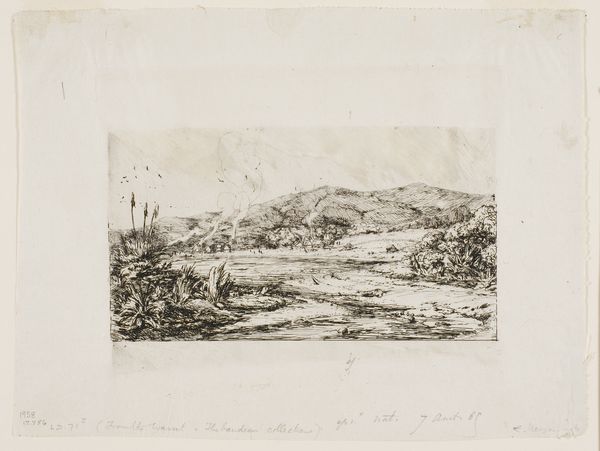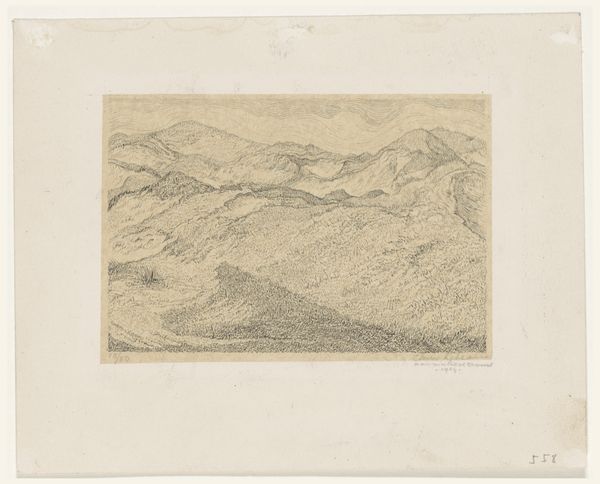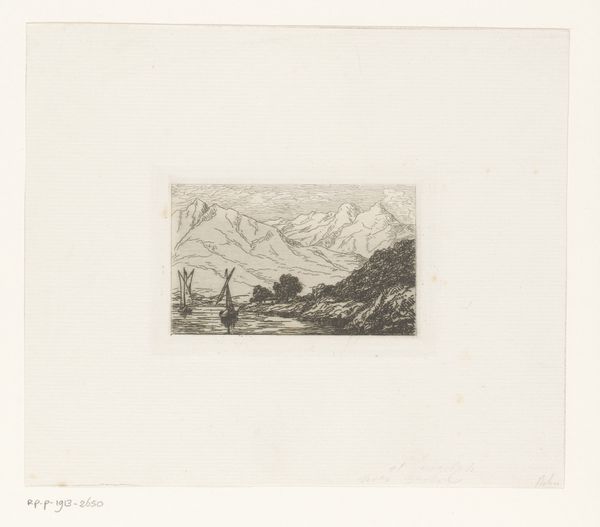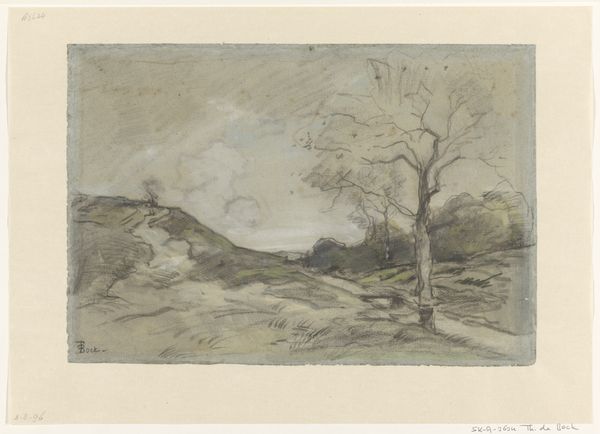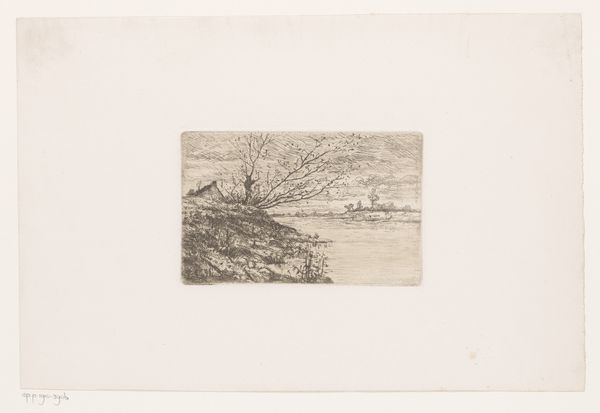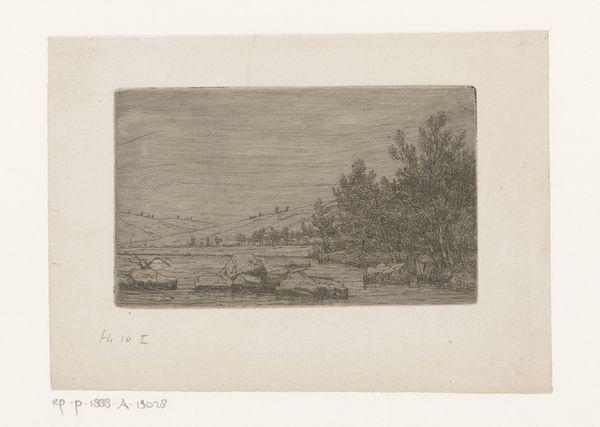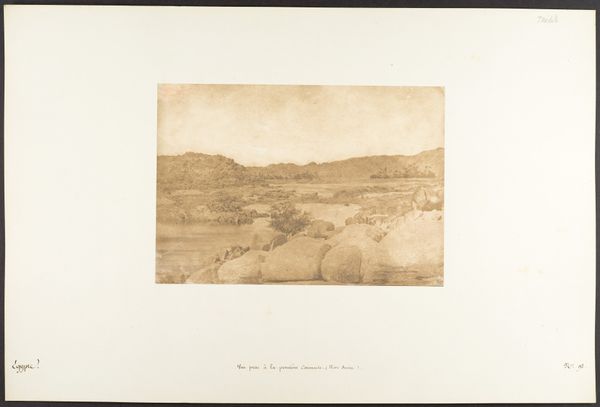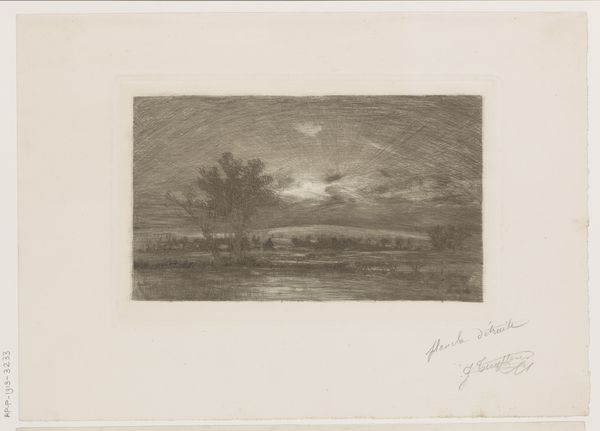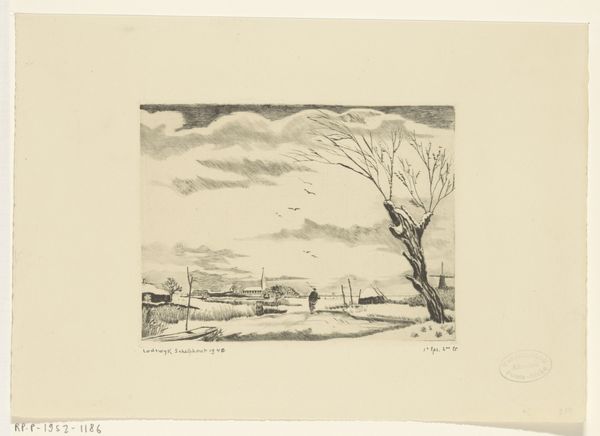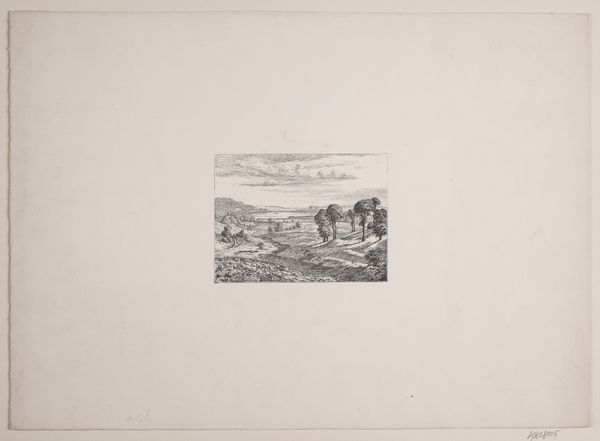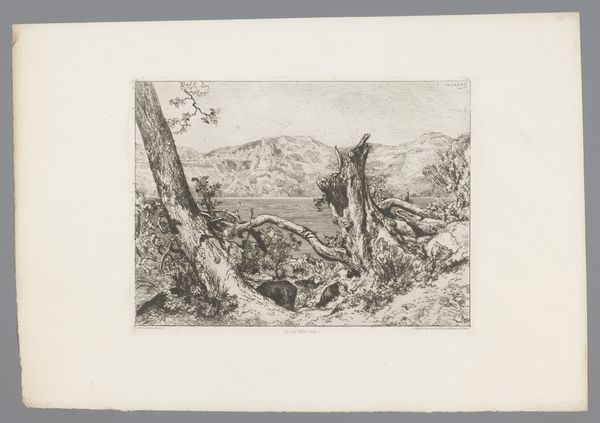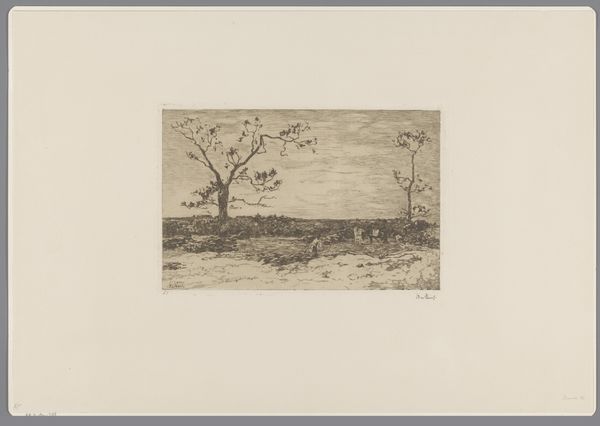
Dimensions: height 169 mm, width 262 mm
Copyright: Rijks Museum: Open Domain
Curator: This etching, titled "Winterlandschap bij maanlicht", is an evocative landscape piece created sometime between 1850 and 1900. Editor: The stark contrast immediately grabs me. That sky, heavy with impending snow, versus the almost desolate ground. It has a melancholic beauty to it. Curator: I agree. Let’s think about the process. Etchings like this are made by using acid to bite lines into a metal plate, the plate is then inked to produce multiples. Each print, and its circulation, served as a key tool for sharing images widely. How was the image consumed? Who could afford this view? Editor: Considering that landscape art often carries nationalistic undertones, and the fact that this is reproduced, could we perhaps explore ideas about accessibility here? Is the artist showing an idealized view to people of differing classes? Curator: Absolutely, access is central. Now consider how light and shadow delineate form so meticulously. Notice how the artist's marks help us see, and the bare tree rendered in delicate lines; almost anthropomorphic as it stands. It creates a dynamic interplay. Editor: The bare tree is visually symbolic of isolation, a central theme within Romanticism, don’t you think? The details within the bleak setting also demonstrate a move towards Realism and raw observation. There's something compelling about how it is stripped of idealized sentiment. Curator: Stripped bare by what? The etching process or nature herself? The acid would create lines; but the labor involved in working the material might bring nature's forces to bear. Editor: Perhaps both are at play? Let's remember how, using semiotics, a solitary object against the backdrop suggests that the figure can tell many possible narratives... I believe "Winter Landscape by Moonlight" really exemplifies the tensions of that time through these artistic choices. Curator: And by unpacking these processes and materials, along with their social implications, we have a much richer understanding of its meaning, consumption, and significance in history. Editor: Yes, and viewing the art's composition also yields insightful understanding of culture, style, and artistic intent. It's this dialogue that really enhances how we relate to art, no?
Comments
No comments
Be the first to comment and join the conversation on the ultimate creative platform.
